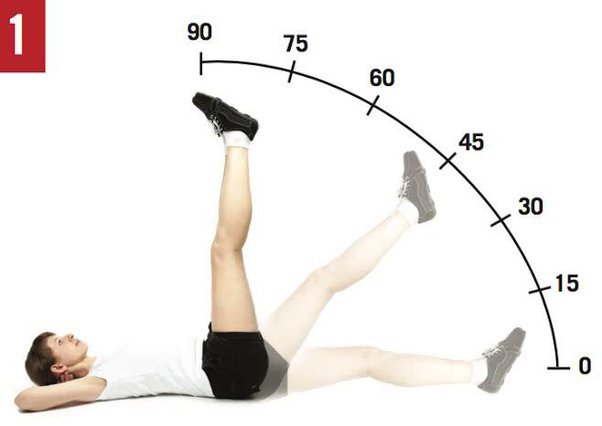Hamstring Length and Lower Back Pain
We have all seen it and you may be a victim of it, the infamous “butt wink” on a deep squat. If you complain of low back pain after squat day, I encourage you to examine your lower back position at the bottom of your squat. If you notice a decreased lumbar curve (flat back) and posterior pelvic rotation (butt-wink), you have a flexibility issue to address.
How tight hamstrings affect your squat depth and lower back
As you descend in your squat, the proximal hamstrings (up by your pelvis) are put on stretch.
You have reached your maximum hamstring length to eccentrically control the weight, but squat depth still hasn’t hit parallel.
Your pelvis rolls posteriorly (green box) to give you that few extra inches in your squat depth.
The neutral lumbar curve is now reduced and flattened out
The muscles of the lower back are put into overdrive to stabilize the spine and prevent you from dumping the weight.
Strain of the lower back muscles leading to pain and lower back tightness
Fig 1: Normal spinal and hip alignment with appropriate hamstring length (red line). Fig 2: Decreased lumbar lordosis due to shortened hamstrings (ble line). Picture Resource: www.liftbigeatbig.com
Measuring Your Own Hamstring Length: Straight Leg Raise Test
Measuring hamstring length using the straight leg raise test is a straightforward process that you can do at home. This test evaluates the flexibility of your hamstring muscles. Here’s how to perform it:
Find a Comfortable Space: You'll need a flat surface where you can lie down, like a yoga mat on the floor.
Lie Down: Lie on your back with both legs extended straight. Keep your arms by your sides and your head resting comfortably on the floor.
Prepare for the Test: Bend one knee so that your foot is flat on the floor, keeping the other leg straight on the ground.
Perform the Straight Leg Raise: Keeping the leg on the ground straight and your foot relaxed, slowly raise the other leg upwards without bending the knee. You should keep your pelvis stable and avoid lifting it off the ground. The goal is to lift your leg using only your hip muscles, not by arching your back.
Measure the Angle: The point of this test is to measure the angle between the raised leg and the floor at the point where your hamstring tightens and you can’t raise the leg further without bending the knee. You can use a protractor app on your smartphone, placed on the shin, to measure this angle accurately. Alternatively, have someone observe and estimate the angle.
Record Your Results: The angle at which your leg stops rising is the measure of your hamstring length. A range of 70-90 degrees is generally considered normal for hamstring flexibility. Less than this may indicate tight hamstrings.
Repeat for Consistency: Perform the test three times for each leg to ensure consistency in your measurements.
Compare Both Legs: Make sure to test both legs to compare flexibility and identify any imbalances, as significant differences between the legs might indicate specific tightness or previous injury.
Here’s what you can do about it:
PNF stretch your hamstrings with a contract-relax technique. The old method of leaning into your foot propped up on a table is outdated and an invalid time-waster.
Stretch BEFORE you squat, deadlift, RDL, or lunge. I’m sure you heard not to stretch out before lifting heavy, but that guideline already assumes you have a healthy hamstring length-tension relationship.
Stretching immediately AFTER working your hamstrings will help to maintain the newly achieved length you worked so hard for.
Sitting for long periods can take a toll on your hamstring length. If you have a choice at work, stand more than you sit.
Give your lower back and hamstrings some attention with a lumbar roll to promote localized blood flow and help alleviate preexisting pain.


